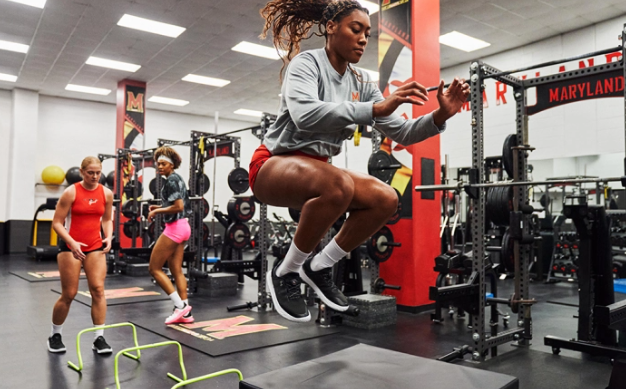Under Armour CEO Stephanie Linnartz Is Banking on Footwear to Win Over Female Consumers
Under Armour CEO Stephanie Linnartz wants to win over more female consumers. And she plans to leverage shoes to do it.
“Footwear must also be part of the long-term equation to grow the women’s business,” Linnartz told analysts in a call discussing the company’s fourth quarter earnings on Tuesday. “We will go after women harder than this company has ever seen.”
Women’s product currently makes up less than one fourth of Under Armour’s revenues, said Linnartz, who became president and CEO of Under Armour in February. Footwear, which Linnartz described as Under Armour’s “single most significant growth opportunity,” is also an under-penetrated sector, representing 25% of annual revenues for Under Armour.
Both of these categories will work in tandem to realize an addressable market of new consumers, Linnartz said. This growth will start by repositioning and remarketing existing product in a fresh way. Eventually, Under Armour will introduce new products to the market.
“It’s not going to be done overnight,” Linnartz said.
Overall, adjusted earnings per share came in at 18 cents during the fourth quarter, 3 cents ahead of the 15 cents analysts projected on average, according to FactSet. Revenues rose 7.5 percent to $1.4 billion from $1.3 billion. The company offered lackluster guidance for this year as Linnartz lays out a plan to reshape the
While Under Armour has historically been rooted in performance, executives also signaled a new focus on sneaker culture, or what founder Kevin Plank described as a shift from “footwear culture to a real sneaker culture.”
This will happen by emphasizing the brand’s image off the courts and fields and offering product that could potentially be seen on the feet of athletes in a tunnel walk. In this vein, Under Armour will also expand its sneaker collaboration offerings by bringing in “sneaker and branding experts” to help delve into this sector, Linnartz said.
“You will hear us talking a lot more about sneaker culture,” she added. This shift goes hand-in-hand with Under Armour’s renewed focus on its Sportstyle unit, which focuses on style and design in a more casual setting, à la athleisure.
“Footwear, women’s and Sportstyle are not mutually exclusive,” Linnartz said.
Tapping into sneaker culture has become a growing priority for other major footwear players of late. Foot Locker in March outlined a plan to tap into different classes of sneaker consumers — from sneaker mavens to deal seekers — by capitalizing on key sneaker moments and offering exclusive launches and collaborations.
Going all-in on Sportstyle and sneaker culture would help Under Armour expand its reach beyond the realm of perfomance, Williams Trading analyst Sam Poser wrote in a note to investors. However, these changes would likely not have an impact on results until Q4 of 2024, given the company’s 17-month long product development pipeline.
“While improvements at Under Armour are underway, there is still a long way to go,” Poser wrote. “Under Armour is entering into a sport lifestyle world that is controlled by Nike and to a lesser degree by Adidas and Puma.”
